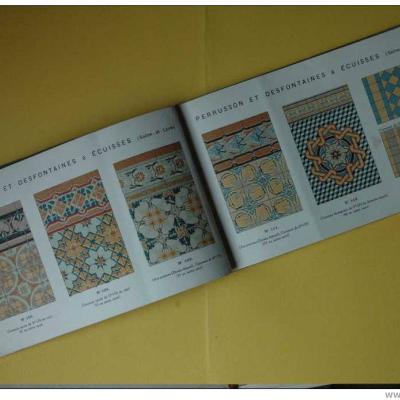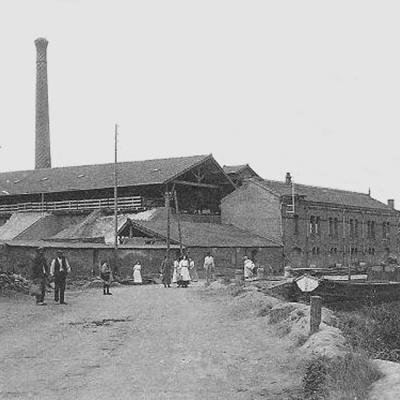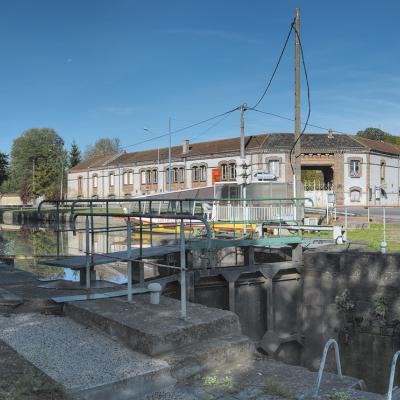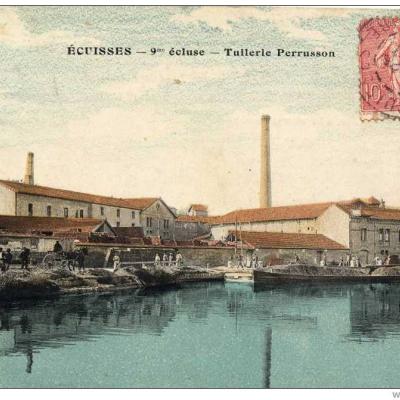RARE - Late 19th Century antique Perrusson ceramic floor - 12.5m2
We have recently recovered and professionally restored four antique French ceramic floors, reclaimed from the renovation of a bourgeois house close to Macon in the Saone-et-Loire department of Burgundy. Ceramic encaustic, the tiles are all reverse stamped with a 9 dot motif and manufacturer, 'Perrusson Ecluses'. 17.3cm square and c.15mm thick these are beautiful tiles; a good quality gres ceramic, a deep slip with crisp colours in a cool palette and stunning fine detail in the vegetal themed design. The floor here, dating from the latter part of the 19th century, which comprises of a main field tile and two half size border tiles and totals 12.5m2 / 135 sq ft offers a strong vegetal theme across its tessellation, framed by simple and subtly designed half size borders.
The floor has cleaned well revealing an excellent ceramic and a beautiful patina where on a small number of tiles there are edge nibbles and small groutable chips. The high resolution photographs below are of a random section of c.1.5m2 of the floor and show the beauty of a rare antique tile of this heritage.
We have included below a scan from an antique Perrusson catalogue showing the tiles.
Tile quantities, give or take one or two:-
Field tiles - 360 tiles - 10.75m2 / 115 sq ft
Bar half borders - 50 tiles - 0.75m2 / 8 sq ft. or 8.65 linear metres / 28.3 linear ft.
Lozenge half borders - 65 tiles - 1m2 / 10.8 sq ft. or 11.2 linear metres / 36.7 linear ft.
Plus free tile reject offcuts.
Ceramiques Perrusson, Ecluses
A brief history
Jean-Marie Perrusson was not only known for ceramic tile production but also for the production of bricks and roof tiles. Many of the lozenge themed terracotta mechanical tiles in Burgundy bear the Perrusson hallmark. He built his first brick making factory in 1860 and started mechanical tile production in 1863, to which he added a workshop for manufacturing ceramic tiles in 1875. Further expansion of the ceramic tile production in the Saône-et-Loire was initiated (in Saint-Julien-sur-Dheune in 1866, St. Pantaleon 1870), and even beyond the department (in Sancoins Cher in 1870 and Fontafié in Charente in 1878).
The company was renamed ‘Perrusson Fils et Desfontaines’ in 1890 and the factory also manufactured architectural ceramics and statues. In April 1960 the factory finally closed its doors. The vast majority of the original buildings constructed in 1890/1900 are destroyed with the offices, changing rooms of the factory, the concierge and the electrical workshop the only significant remnants of the site that can still be seen. We have included some photographs below of the factory both recently and from the period of its peak.
The Perrusson factory employed 40 workers in 1860, 80 by 1874, 130 in 1890, 300 at its peak in 1900, 280 in 1930 and 130 during 1945 to 1950.
CE216








